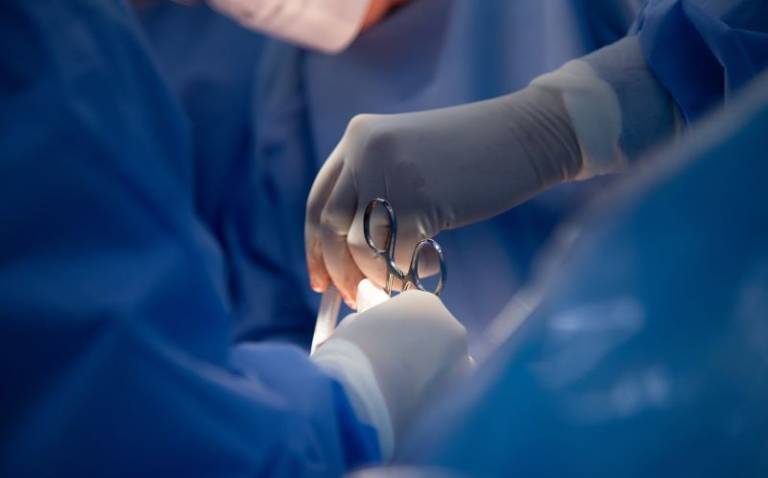Four women have successfully had combined surgery, in which they gave birth by caesarean section and at the same time had surgery to reduce their risk of ovarian cancer, thanks to a team of researchers and clinicians at UCLH and UCL.

The women are all carriers of the BRCA1 or BRCA2 gene alterations, which put them at higher risk of ovarian cancer. Risk-reducing surgery for these patients, known as a bilateral salpingo-oophorectomy (RRSO), is usually a standalone procedure to remove the fallopian tubes and ovaries
The first case of a caesarean section with the risk-reducing bRRSO to reduce ovarian cancer risk was done at UCLH in 2018. The team is not aware that this type of surgery has previously been reported in a medical journal.
The new series report, published in the Journal of Obstetrics and Gynecology, is led by Professor Adam Rosenthal (UCL EGA Institute of Women's Health and consultant gynaecologist at UCLH).
Completing four cases of the surgery now indicates it could be routinely offered to women who carry the BRCA gene alteration and who are due to have a caesarean section. All women reported a high level of satisfaction with the two-in-one procedure.
Individuals with BRCA1 or BRCA2 gene alterations have an 11-68% lifetime risk of developing ovarian cancer. This compares with approximately 2% in the general population. BRCA gene alterations are linked to around 15% of ovarian cancers.
RRSO is the only proven way to reduce ovarian cancer mortality, and reduces ovarian cancer risk by at least 95%.
All four women in the new report were referred to the UCLH Familial Cancer Clinic during pregnancy between March 2018 and March 2022. All were receiving maternity care at UCLH, and all were due to give birth by caesarean section for other reasons.
To be considered for the procedure, the women had to be over 35 or 40 years old for the BRCA1 and BRCA2 alterations respectively, and not planning any further children. The four women were between 40 and 45 years old.
After the combined surgery was discussed with the women, all cases were discussed at a multidisciplinary meeting involving obstetricians, gynaecological oncologists, clinical geneticists, genetic counsellors, and clinical psychologists.
All four surgeries went well and none of the women had serious post-surgical complications. Patients did not need to stay in hospital any longer than they would have after a caesarean section alone. There is a theoretical possibility of greater blood loss with risk-reducing surgery at the time of caesarean delivery - but there was no evidence that this was a problem in these cases.
Risk-reducing surgery will always result in infertility, although women who have had eggs harvested prior to risk-reducing surgery may still be able to benefit from assisted reproduction.
Risk-reducing surgery will also result in early menopause, so hormone replacement therapy is recommended until 51 years of age unless there are reasons not to give it, such as previous treatment for breast cancer.
Professor Rosenthal, who is supported by the National Institute for Health and Care Research UCLH Biomedical Research Centre, said: "Offering this two-in-one surgery could prove very beneficial to other women at high risk of ovarian cancer, who would then avoid the need for separate risk-reducing surgery. We were delighted to hear from the four patients how happy they were to have had the combined procedure.
"The number of women who give birth by caesarean section is increasing around the world, as is the number of women who know they carry a gene alteration which increases their ovarian cancer risk. This means many more women may be suitable for the combined procedure.
"There is also a potential cost saving to any healthcare system by avoiding the need for two separate operations."






